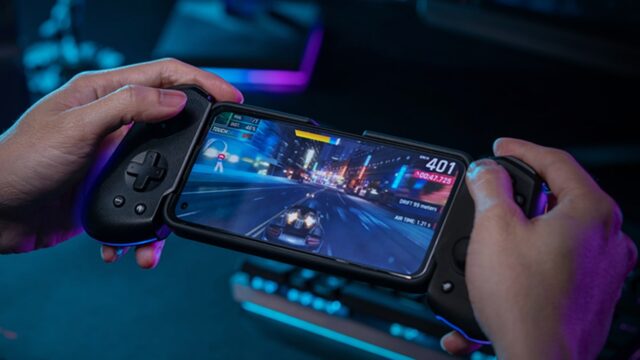Nvidia offers another one of its important technologies to GeForce Now subscribers. Cloud gaming services are becoming more popular day by day. GeForce Now, which has an important place among these, offered significant support to players. G-SYNC and G-SYNC Pulsar support, developed by Nvidia in 2013, also came to GeForce Now. So, what is G-SYNC and G-SYNC Pulsar technology and why is it important for GeForce Now?
Nvidia G-SYNC and G-SYNC Pulsar support has arrived for GeForce Now!
Nvidia continues to invest in the GeForce Now cloud gaming platform. Accordingly, Nvidia offered G-SYNC support to GeForce Now users. The first requirement for using this technology is to have a screen that supports G-SYNC. With Nvidia, G-SYNC and Pulsar support, it will also prevent fluency and lag problems encountered in cloud gaming.
G-SYNC, which appeared ten years ago, was developed by Nvidia to ensure refresh rate synchronization between graphics cards and monitors. In this sense, Nvidia also introduced G-SYNC Pulsar technology at CES 2024. Pulsar, on the other hand, has important features for VRR gaming monitors, in addition to synchronization.

As you know, VRR, that is, monitors with variable refresh rate, have started to enter our lives in recent years. With Pulsar, Nvidia instantly adapts to this variable refresh rate. Thus, the GeForce Now service becomes fluid, synchronized and compatible with the instantaneous screen refresh rate.
GeForce Now players particularly struggled with lag and screen lag issues when the service first launched. Today, although these problems have been overcome with the increase in the number of servers, they still continue. The main reason for this is the lack of G-SYNC support in the GeForce cloud gaming service.
Nvidia believes that with this new G-SYNC and Pulsar support, the gap between cloud gaming experience and playing games on the computer will be closed. In its announcement at CES 2024, the brand announced 24 new models in collaboration with Alienware, AOC, ASUS, Dough, IO Data, LG, Philips, Thermaltake and ViewSonic, which offer G-SYNC Pulsar support.


New models offering Nvidia G-SYNC support include Alienware AW3225QF, one of the world’s first 240Hz 4K OLED gaming monitors, Philips Evnia 49M2C8900, one of the world’s first ultra-wide DQHD 240Hz OLED gaming monitors, and LG’s 2024 new 144Hz OLED and wireless TV series.
With G-SYNC Pulsar technology, gamers don’t have to choose between smooth variable refresh or Ultra Low Motion Blur. Pulsar has a structure that offers the best features of these options according to the instant needs of the player.
Here is the list of 24 new models that offer Nvidia G-SYNC and G-SYNC Pulsar support:,
| Producer | Model | Size (Inch) | Panel Type | Resolution | Refresh Rate |
|---|---|---|---|---|---|
| Alienware | AW3225QF | 32 | OLED | 3840×2160 (4K) | 240Hz |
| ASUS | ROG Swift PG27 series | 27 | IPS | 2560×1440 (QHD) | 360Hz |
| ASUS | PG49WCD | 49 | OLED | 5140×1440 (DQHD) | 144Hz |
| AOC | 16G3 | 16 | IPS | 1920×1080 (FHD) | 144Hz |
| AOC | 24G4 | 24 | IPS | 1920×1080 (FHD) | 165Hz |
| AOC | 27G4 | 27 | IPS | 1920×1080 (FHD) | 165Hz |
| AOC | PD49 | 49 | OLED | 5120×1440 (DQHD) | 240Hz |
| AOC | Q27G2SD | 27 | IPS | 2560×1440 (QHD) | 180Hz |
| Dough | ES07E2D | 27 | OLED | 2560×1440 (QHD) | 240Hz |
| IO Data | GCU271HXA | 27 | IPS | 3840×2160 (4K) | 160Hz |
| LG | 2024 4K M4/G4 | 97 | OLED | 3840×2160 (4K) | 120Hz |
| LG | 2024 4K M4/G4 | 83, 77, 65, 55 | OLED | 3840×2160 (4K) | 144Hz |
| LG | 2024 4K C4 series | 83, 77, 65, 55, 48, 42 | OLED | 3840×2160 (4K) | 144Hz |
| LG | 2024 4K CS series | 65, 55 | OLED | 3840×2160 (4K) | 120Hz |
| LG | 2024 4K B4 series | 77, 65, 55, 48 | OLED | 3840×2160 (4K) | 120Hz |
| LG | 24G560F | 24 | IPS | 1920×1080 (FHD) | 180Hz |
| LG | 27G560F | 27 | IPS | 1920×1080 (FHD) | 180Hz |
| LG | 27GR75QB | 27 | IPS | 2560×1440 (QHD) | 144Hz |
| LG | 32GP75A | 32 | IPS | 2560×1440 (QHD) | 165Hz |
| Philips | 25M2N3200 | 25 | IPS | 1920×1080 (FHD) | 180Hz |
| Philips | 27M1N5500P | 27 | IPS | 2560×1440 (QHD) | 240Hz |
| Philips | 49M2C8900 | 49 | OLED | 5120×1440 (DQHD) | 240Hz |
| thermaltake | 27FTQB | 27 | IPS | 2560×1440 (QHD) | 165Hz |
| ViewSonic | XG272-2K-OLED | 27 | OLED | 2560×1440 (QHD) | 240Hz |

